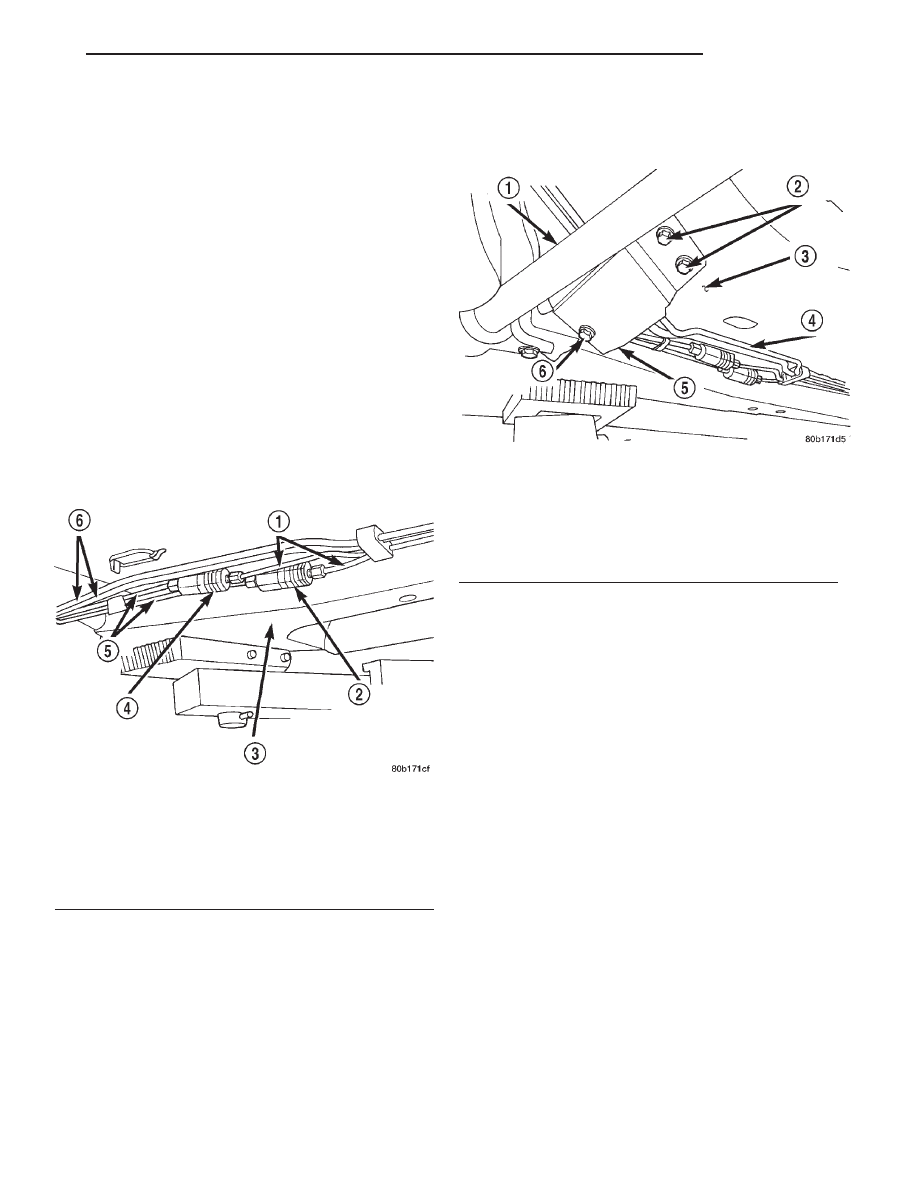Chrysler Stratus Convertible. Manual - part 207

PROPORTIONING VALVE
NOTE: The following procedure is for the diagnosis
and testing of the proportioning valve(s) on a vehi-
cle equipped with ABS. For diagnosis and testing of
proportioning valves on a vehicle without ABS,
Refer to the BASE BRAKE SYSTEM section in this
group.
If a condition of premature rear wheel skid occurs
on a vehicle, the proportioning valve should always
be tested prior to it being replaced. This is due to the
fact that there are conditions other then a faulty pro-
portioning valve which can cause a premature rear
wheel skid.
One proportioning valve controls the right rear
brake, and the other proportioning valve controls the
left rear brake (Fig. 17). Therefore, a road test to
determine which rear brake slides first is essential.
Once the wheel which is skidding first is determined,
use the following procedure to diagnose the propor-
tioning valve.
The test procedure is the same for both rear wheel
proportioning valves. After road testing vehicle to
determine which wheel skids first, follow the proce-
dure below for testing the required proportioning
valve.
(1) Remove the cover (Fig. 18) securing the chassis
brake tubes and the fuel lines to the vehicle floor
pan.
(2) Remove the chassis brake tubes (Fig. 17) from
the proportioning valve controlling the rear wheel of
the vehicle which has premature wheel skid.
(3) Remove the proportioning valve from the rear
brake chassis tube.
(4) Remove the routing clips for the chassis brake
tubes and fuel lines from the floor pan.
CAUTION: The
chassis
brake
tube
must
be
removed from the routing clips. This is to prevent
the chassis brake tube from having to be bent when
installing the proportioning valve with the pressure
test fittings.
(5) Remove the chassis brake tube that requires
testing of its proportioning valve from the routing
clips.
CAUTION: Be sure the pressure test fittings being
installed into the proportioning valve have the cor-
rect thread sizes and flares for installation into the
proportioning valve and for installation of the chas-
sis brake tubes.
Fig. 17 Proportioning Valve Location
1 – CHASSIS BRAKE TUBES
2 – RIGHT REAR BRAKE PROPORTIONING VALVE
3 – RIGHT FRAME RAIL
4 – LEFT REAR BRAKE PROPORTIONING VALVE
5 – CHASSIS BRAKE TUBES
6 – FUEL TUBES
Fig. 18 Tube Bundle Cover
1 – STABILIZER BAR
2 – MOUNTING BOLTS
3 – FLOOR PAN
4 – TUBE BUNDLE
5 – COVER
6 – MOUNTING BOLT
JX
BRAKES
5 - 91
DIAGNOSIS AND TESTING (Continued)